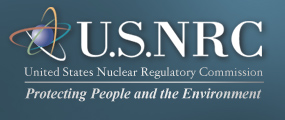Resolution of Generic Safety Issues: Item A-15: Primary Coolant System Decontamination and Steam Generator Chemical Cleaning (Rev. 1) ( NUREG-0933, Main Report with Supplements 1–35 )
DESCRIPTION
Historical Background
Operation of a LWR results in slow corrosion of the interior metal surfaces of the primary coolant system. The resulting corrosion products circulate through the reactor core and are activated by neutron flux from the fissioning reactor fuel. While some of these activated corrosion products are removed by the reactor's water chemistry system, a small amount is continually deposited or plated out on the primary coolant system's internal surfaces. Once activated corrosion products are deposited or plated out, they are not removed by the reactor water cleanup system and continue to accumulate. As a direct result of this accumulation, radiation levels in the vicinity of the primary system rise, thus inhibiting or complicating routine inspection and maintenance of the primary system. This issue was identified in NUREG-03712 and, at the time of its evaluation in 1983, technical activities in pursuit of a solution were in progress by groups that were sponsored by government and private industry prior to 1977.
Safety Significance
Decontamination of primary coolant systems and steam generators is not a safety issue related to the health and safety of the general public but rather to the health and safety of workers in nuclear power plants. Annual occupational radiation doses from the operation and maintenance of nuclear reactors tend to increase with increasing reactor age. 78 , 79 Much of this increase is due to the continued deposition of highly activated corrosion products, such as Co-60 and Co-58, in various locations in the primary coolant system. In 1979, the average occupational collective radiation dose per operating PWR was 510 man-rem and the corresponding figure per operating BWR was 733 man-rem. 78 Approximately 80% of the occupational radiation dose resulted from inspection and maintenance activities 78 which were mostly related to the primary coolant system.
Possible Solutions
Periodic removal of activated corrosion products would reduce occupational exposure due to maintenance and inspection activities. Two methods were proposed for decontaminating reactors intended to be returned to service: (1) strong solution decontamination, such as NS-1 (Dow Chemical); and (2) weak or dilute contamination solutions. Weak solutions are typically CAN-DECON (London Nuclear Limited), LOMI (Central Electric Generating Board), hydrogen peroxide/citric acid, and hydrazine/EDTA. Decontamination factors range from 2 to 5.80 Weak solution decontamination was utilized at Nine Mile Point 1, Vermont Yankee, and Brunswick Units 1 and 2, while strong solutions were utilized at Peach Bottom Units 2 and 3. In these plants, decontamination solutions were used to decontaminate systems and components.
CONCLUSION
This issue was RESOLVED with the publication of decontamination criteria in NUREG/CR-2963. 489
REFERENCES
|


